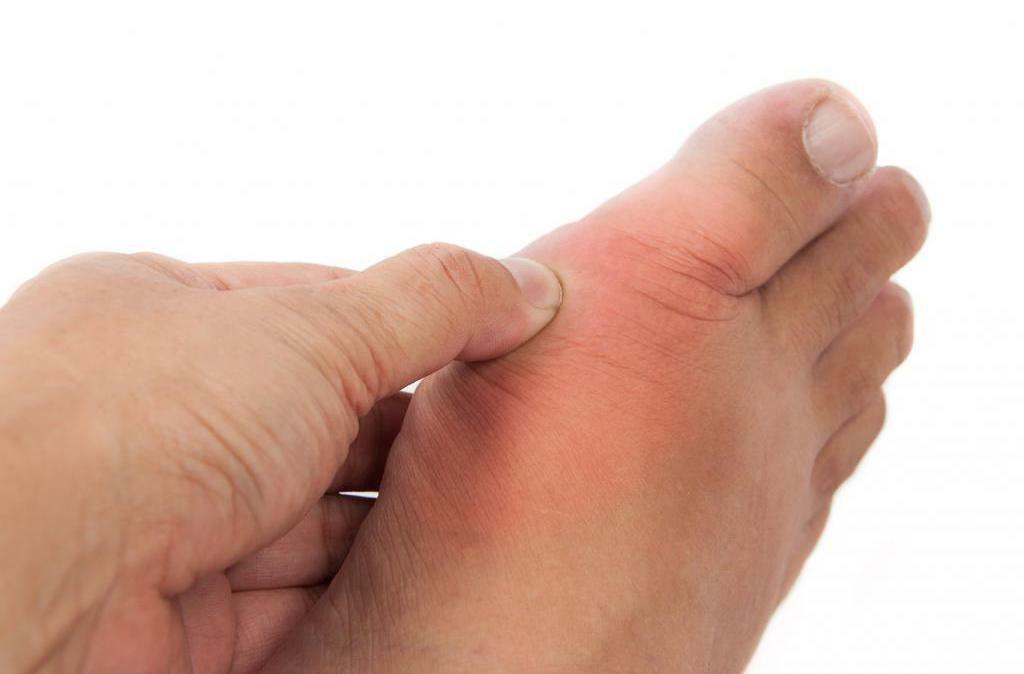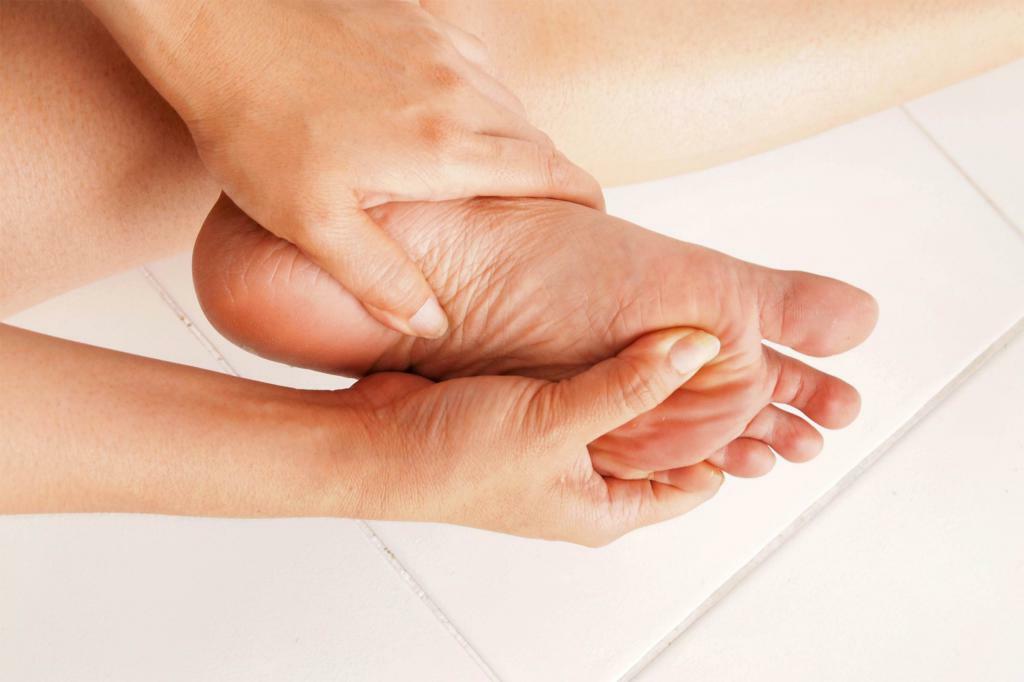Edema of the feet in diabetes: possible causes and characteristics of treatment
Edema of the feet in diabetes is one of the main signs of systemic damage to the vascular system. It is necessary to conduct a thorough treatment to prevent the formation of trophic ulcers and the removal of limbs.
Why does the edema of
occur? Edema of the feet in diabetes mellitus can be due to vascular trauma, which occurs as a result of circulatory disorders. In addition, it can occur with a nephropathic syndrome.

A similar condition threatens with poor wound healing, resulting in even small scratches causing a purulent inflammation. If the treatment is not performed in a timely manner, gangrene can occur with subsequent amputation of the foot or completely the legs. Among the main causes of edema of the legs in diabetes, we can distinguish:
- excessive weight;
- power failure;
- smoking;
- consumption of alcoholic beverages;
- improper treatment of glycemia.
You should definitely consult a doctor if you have a dangerous symptomatology, as this will avoid dangerous complications.
What accompanies the puffiness
Often, after the swelling of the feet in diabetes mellitus, begins to develop a diabetic foot syndrome. It is accompanied by damage to the tissues of the legs, and against the background of hypoxia, their death occurs. This process is irreversible and ends with necrotic lesion.
Causes of foot edema in diabetes mellitus can be associated with pregnancy, heart and kidney damage, varicose veins. It is worth noting that it is swelling is the first signal of the onset of the necrotic process. There are certain signs, among which we can distinguish:
- sensation of burning sensation in the legs;
- feet are constantly cold;
- increased sensitivity to mechanical damage.
When exposed to high or low temperatures, considerable soreness appears. After the first symptoms appear, the limbs begin to swell gradually.

In order to determine the presence of a problem in a timely manner, it is necessary to pay attention even to the slightest changes in sensations. Be sure to alert:
- ripple;
- tingling;
- burning.
All this must necessarily alarm and force to visit the doctor to determine the cause of the disorder, since this symptomatology signals the presence of disorders in the body.
Diagnosis of
If you have swollen legs in diabetes, you need to contact an endocrinologist and a vascular surgeon. The doctor conducts a checkup to diagnose the extent of the foot injury and to prescribe the appropriate treatment. When conducting a diagnosis of diabetes, the examination should be done at least once a year.

Among the research methods it is necessary to distinguish:
- inspection;
- ultrasound diagnosis;
- pulse check in the legs;
- definition of neurologic reflexes;
- electroneuromyography.
After the examination, the doctor prescribes the required treatment. The patient receives additional recommendations for proper care of the feet.
How to treat a diabetic foot
If swelling of the legs with diabetes, what should I do? This is of interest to very many patients who suffer from this disease. Every morning after waking up, you must always look at the limbs for injuries or injuries. If they are available, disinfection and dressing should be carried out.
For processing, it is forbidden to use iodine, alcohol or brilliant greens. These drugs will cause the skin to dry out and further exacerbate the existing problem.

To reduce the likelihood of injuries and wounds, moisturizing the skin with moisturizing and nourishing cream should be performed daily. Excessive dryness of the skin, manifested with puffiness, can only aggravate the existing problem.
Treatment of
Many patients are interested in how to treat leg edema with diabetes in order to effectively get rid of the existing problem and normalize your health. To eliminate this symptomatology, it is necessary to determine the main cause of the formation of this condition.

If the puffiness has arisen in the development of diabetic nephropathy, then it is necessary:
- to normalize the level of glycemia;
- follow the diet;
- conduct wound treatment;
- quit smoking.
A high level of glucose leads to the progression of damage to the kidneys and nerve endings. The patient thus does not feel pain even at occurrence of an ulcer. This greatly complicates the process of therapy. It is very important to treat concomitant diseases, which in time can lead to severe swelling.
Drug treatment
How to treat leg edema in diabetes, can recommend only a qualified doctor, based on the results of the preliminary examination, as well as taking into account the patient's well-being. Therapy should consist of several items. If the causes of puffiness are hidden in a high level of glucose in the blood, then it is necessary to take funds to reduce it. Just excluding the main cause of the pathological process, you can quickly and effectively get rid of it. In the first type of diabetes, insulin therapy is recommended.

If puffiness occurs for other reasons, then other methods of treatment are prescribed. If this condition is associated with wearing uncomfortable shoes, then you need to purchase special sneakers or shoes.
Often, with diabetes, concomitant pathology is heart failure, in this case, prescribed medications such as:
- inhibitors;
- diuretics;
- receptor blockers.
Inhibitors help to reduce pressure. To such medicines can be attributed "Amprilan", "Captopril", "Lizinopril".The receptor blockers act almost the same way as the inhibitors. The best product of this group is Valsartan.
Diuretics help reduce the amount of fluid in the tissues, increasing the release of urine. The best medicines of this group are those such as "Furosemide" or "Veroshpiron".It is strictly forbidden to use diuretics with a lack of sodium in the body, dehydration or anuria. To strengthen immunity, vitamin complexes are prescribed for diabetics. To eliminate painful feelings, it is recommended to use painkillers, in particular such as "Ketorol" or "Ketorolac".In addition, you need to take biologically active supplements to normalize the hormonal background.
Folk methods for the treatment of edema
If there is swelling of the legs with diabetes and limbs lose sensitivity, then this may indicate damage to the nerve endings. In this case, it is important to start the treatment in a timely manner and normalize the blood circulation. This will eliminate dangerous symptoms and normalize your health.
Various medicinal herbs can be used for the therapy, in particular, such as:
- St. John's wort;
- oats;
- burdock;
- ginseng root.
In addition, to eliminate leg edema with diabetes will help cayenne pepper, and the result of its application will be almost instant. This plant helps restore damaged nerve endings and blood vessels.
To quickly eliminate leg edema with diabetes, you need to mix oats, bean pods, currant leaves and lilac buds in equal proportions. Then take a little of this mixture and heat it with hot water, allow to stand for several hours, drain and take 5 times a day for 1 tbsp.l. The duration of therapy is approximately 2 weeks.
If your legs hurt badly, then you need to take a decoction of flax seeds, as well as a good preparation for puffiness is considered compote, made from figs. To do this, you need to cook fresh fruits like a regular compote and add a little soda to it.
Compliance with the
dietIf there is swelling of the legs in diabetes mellitus in the elderly, then it can very quickly lead to complications, as in the elderly, the immunity is greatly weakened. If you have problems with the limbs, you should definitely follow a special diet. It should be low-carbohydrate, saturated with proteins and fiber.

Diabetics are strictly prohibited from consuming sweets and sugar. In extreme cases, only consumption of bitter chocolate is allowed. In addition, they can not drink alcohol and eat fatty foods. The absence of a diet can provoke many complications. Therefore, with the appointment of treatment, the endocrinologist additionally determines the basic rules of nutrition.
Puffiness prophylaxis
Taking care of the feet of a diabetic patient is the observance of simple rules that help prevent serious complications. Prevention includes:
- examination of the legs;
- hygiene procedures;
- cuticle and nail treatment;
- wearing comfortable shoes;
- massage with essential oils;
- performance of medical gymnastics;
- timely access to a dermatologist in the presence of fungus.
It should be taken into account that only medical therapy will not bring any result, since a competent integrated approach is required. Medicines can only reduce the manifestations of diabetes.
